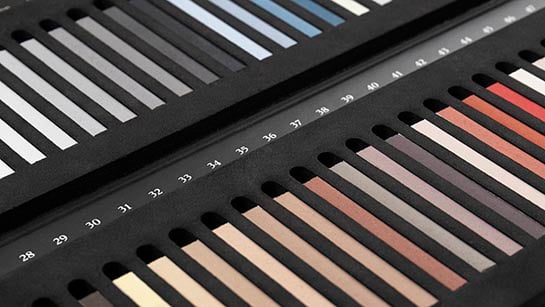-
MenuBack
-
TILES
-
-
Links of interest
-
-
-
-
-
-
OTHER CATEGORIES
-
-
-
Link of Liquidation
-
-
-
MenuBack
-
OTHER MATERIAL
-
-
MenuBack
-
Installation and maintenance
-
-
MenuBack
- Recommendations
-
MenuBack
- PROFESSIONALS
-
MenuBack
- Contact
-
MenuBack
-
SOCIAL MEDIA
-
-
SOCIAL MEDIA
-
-
-
MenuBack
-
TILES
-
-
Links of interest
-
-
-
-
-
-
OTHER CATEGORIES
-
-
-
Link of Liquidation
-
-
-
MenuBack
-
OTHER MATERIAL
-
-
MenuBack
-
Installation and maintenance
-
-
MenuBack
- Recommendations
-
MenuBack
- PROFESSIONALS
-
MenuBack
- Contact
-
MenuBack
-
SOCIAL MEDIA
-
-
SOCIAL MEDIA
-
-
Small tiles are in great demand in interior design and architecture projects due to their great versatility and high technical performance, which is why it is increasingly common to see them in bathrooms, kitchen fronts, fashionable premises or even residential and outdoor floors.
It may seem an unimportant decision, but the truth is that it has a great impact on the final result of a space. A rectangular tile installed in an aligned or offset manner will not transmit the same message, nor will it be the same to cover a wall with pieces of the same size as with a combination of different shapes.
In any case, this trend has recovered harmonious and forgotten laying schemes ideal for creating spaces with a traditional look by combining creative geometric patterns with small pieces of material features.
Discover the trendy placement patterns!
1 ALIGNED OR CONTINUOUS JOINT TILE INSTALLATION
This type of tile installation pattern is the most common, but it is still a trend.
In this pattern, the tiles are laid in a perfect grid of vertical and horizontal lines perpendicular to each other. The pieces have continuity and are not interrupted at any time by other joints.
It is a simple and straightforward pattern but at the same time it offers a continuous and elegant look where the real protagonist is the material.
There are different types of patterns within this category:
- Horizontal aligned pattern: for rectangular pieces laid horizontally.
- Vertical aligned pattern: for vertically positioned rectangular pieces.
- Square aligned pattern: for square pieces placed parallel to the floor.
- Diamond square aligned pattern: for square pieces placed rotated by 45°.


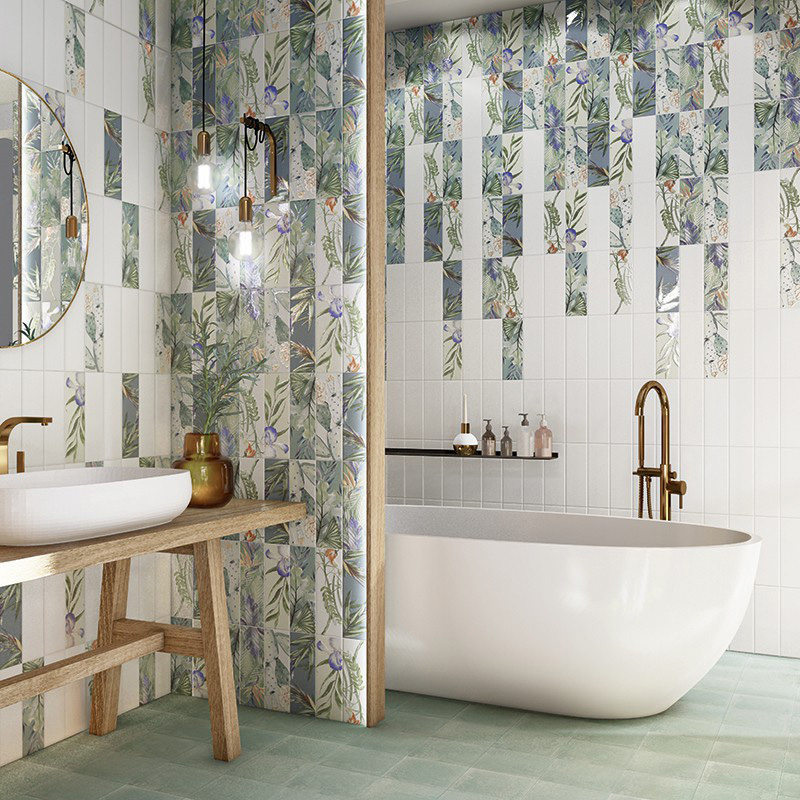
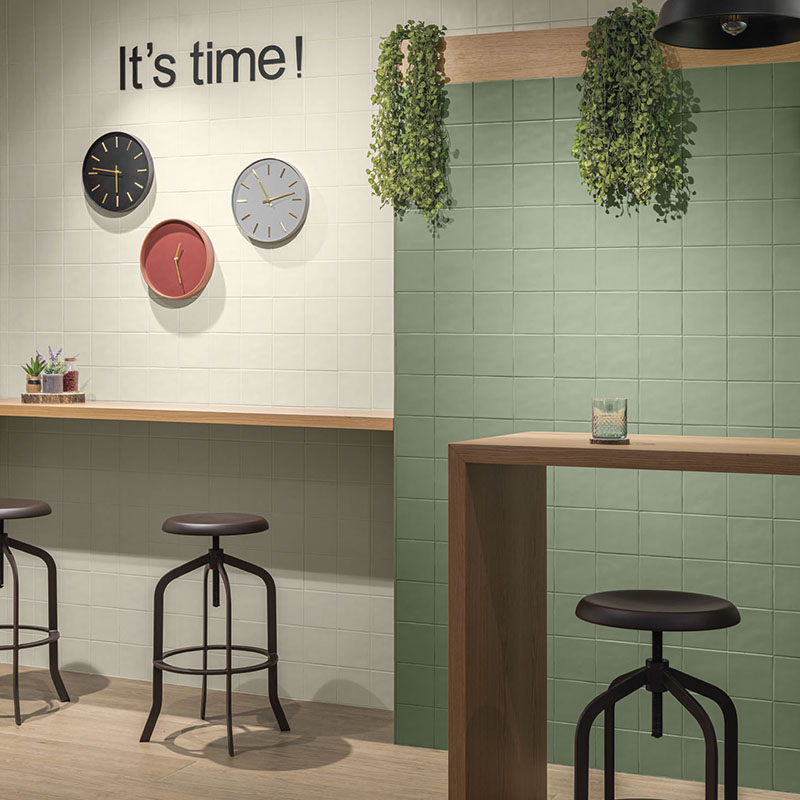
2 OFFSET TILE INSTALLATION OR BUTT-JOINT TILE INSTALLATION
It is known as a butt joint pattern when the second row is laid offset from the first (whether the tiles, in the case of rectangular tiles, are vertical or horizontal).
This is currently one of the most commonly used and least risky patterns.
This type of tile installation offers a neutral appearance and does not overload the space excessively, although the joints, usually on the short side, are constantly interrupted.
In turn, the offset pattern can be divided into different families depending on how much one row is offset from the other. These are the most common patterns:
- Horizontal or vertical half-matched pattern: suitable for both rectangular and square workpieces.
- Horizontal or vertical plywood pattern in thirds: suitable for both rectangular and square pieces.

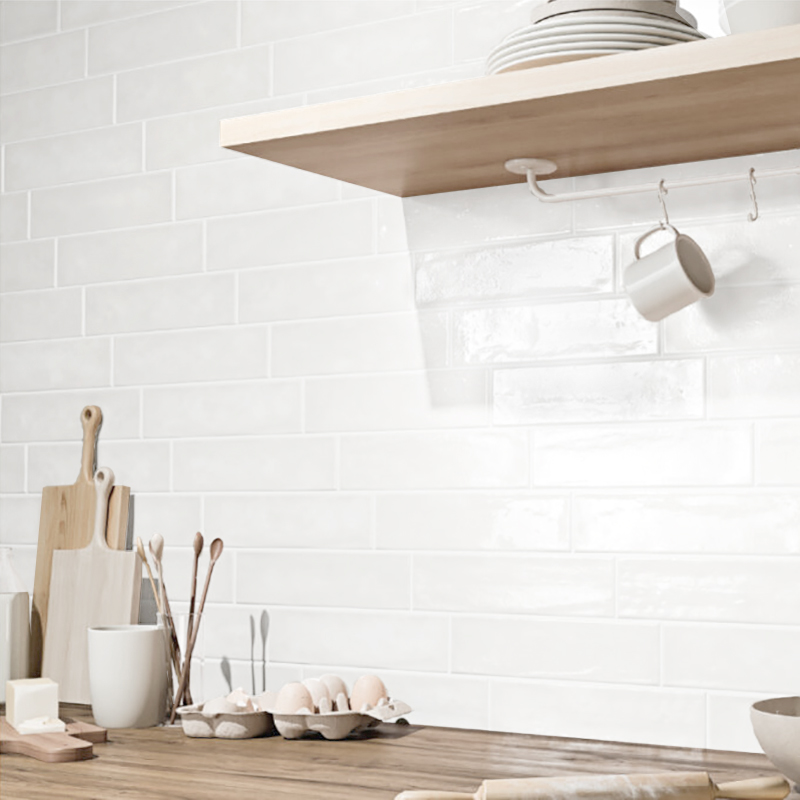
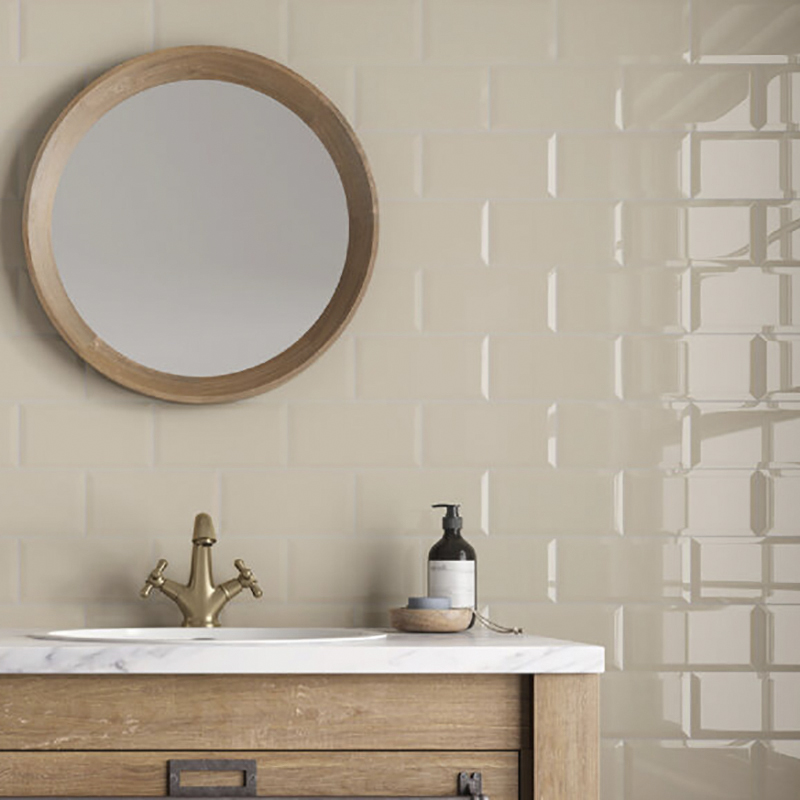
3 OFFSET HORIZONTAL OR VERTICAL TILE INSTALLATION
In this laying pattern the joints are interrupted on the short side and the tiles are offset and aligned with the centre of the tiles on the upper floor (as opposed to the offset pattern which is offset from the long side). This asymmetrical layout will bring a fresh and creative feel to any room.

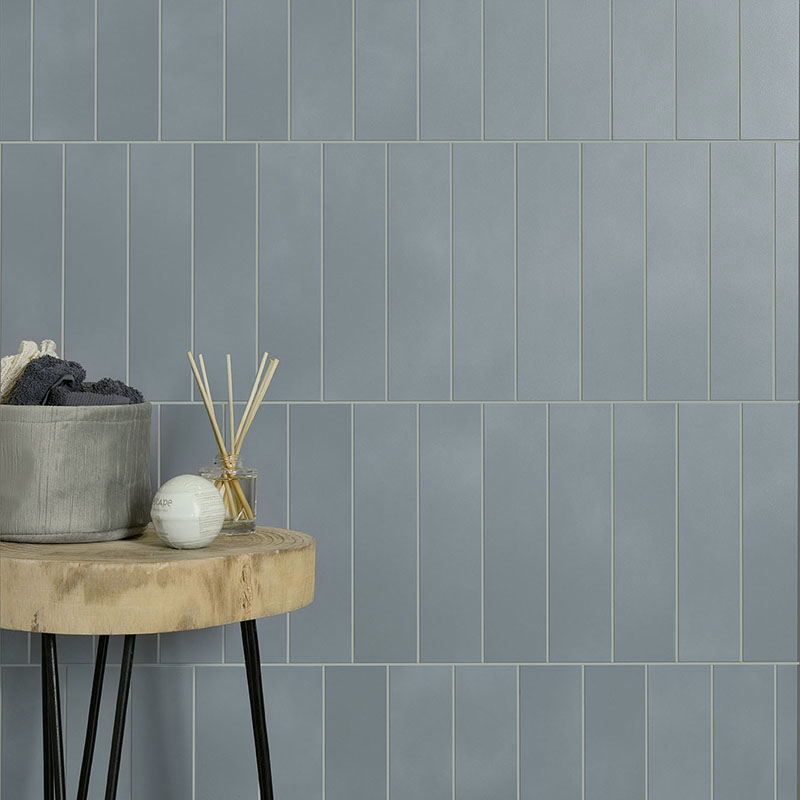
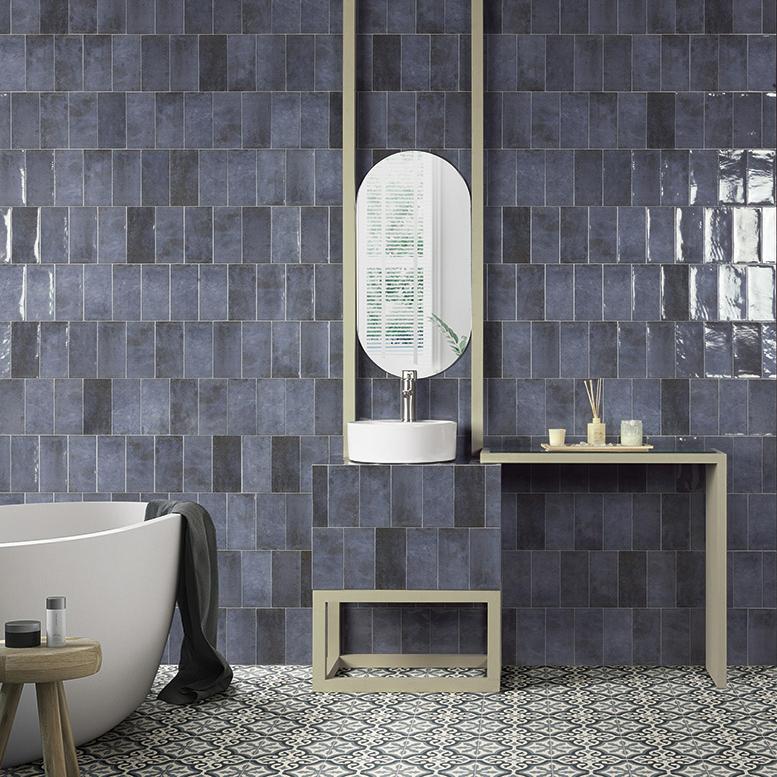
4 HERRINGBONE PATTERN
A very popular laying style is the herringbone pattern. This type of installation is achieved by interlacing rectangular pieces that are proportionate to each other.
In any of its variations (horizontal, vertical or diagonal) the result will give an elegant and simple look to any room as well as creating a vibrant sense of volume.

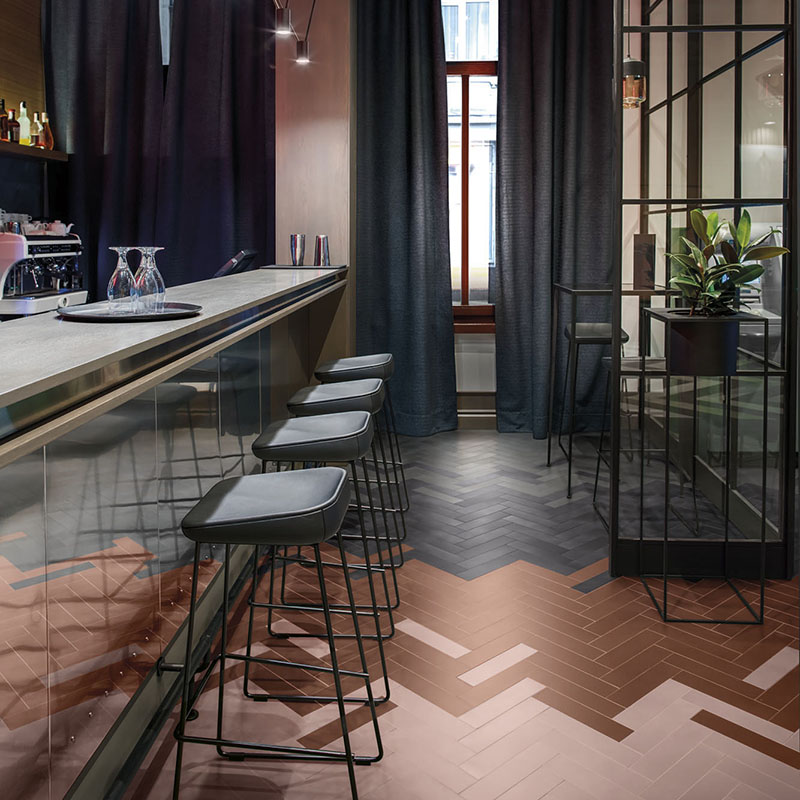

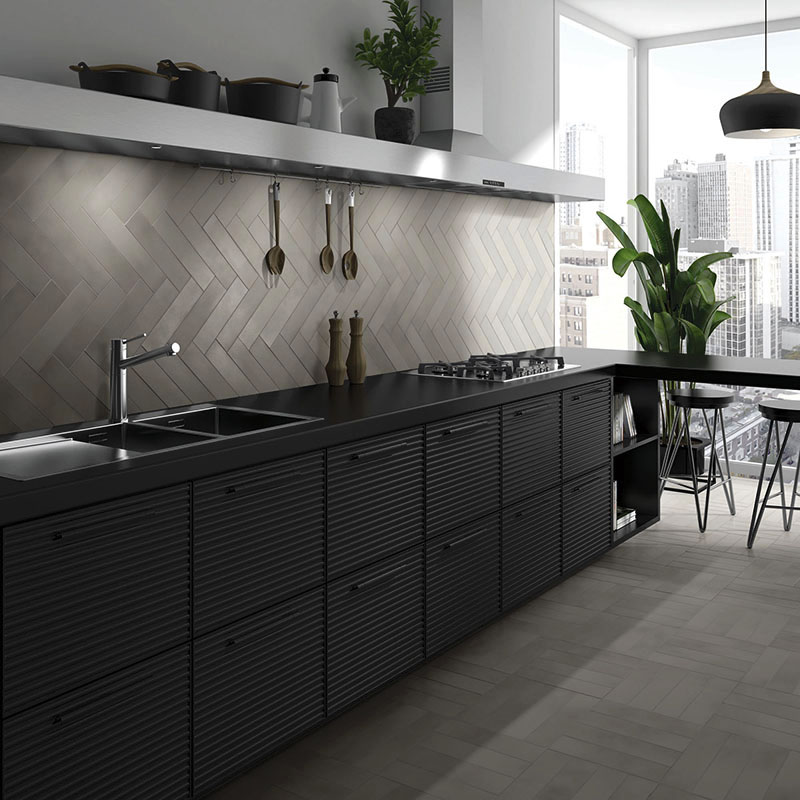
5 BRAIDED PLACEMENT, CROSSHATCH OR CROSSHATCH LINE
This is a pattern formed by perpendicular lines that offers a daring and singular decorative finish. With this laying pattern, different compositions can be formed by alternating multiple tiles with each other, as long as the sizes of the pieces are proportional.
Within this group, there are the following patterns:
- Double or triple-laying
- Double twisted counterpoised tile installation: combines squares formed by two rectangular pieces with rectangles.
- Triple lined braided laying: combines strips of vertical rectangles with strips of horizontal rectangles.

6 COMBINATION OF DIFFERENT SIZES AND PATTERNS
Finally, there is also the possibility of creating patterns by combining pieces of different sizes that are in some kind of proportion to each other, for example:
- Combination of square and rectangular pieces offset against each other.
- Combination of single square pieces with double rectangular pieces aligned in a row
- Combination of squares and octagons joined together at the corners
- Combination of squares and rectangles braided into a swastika

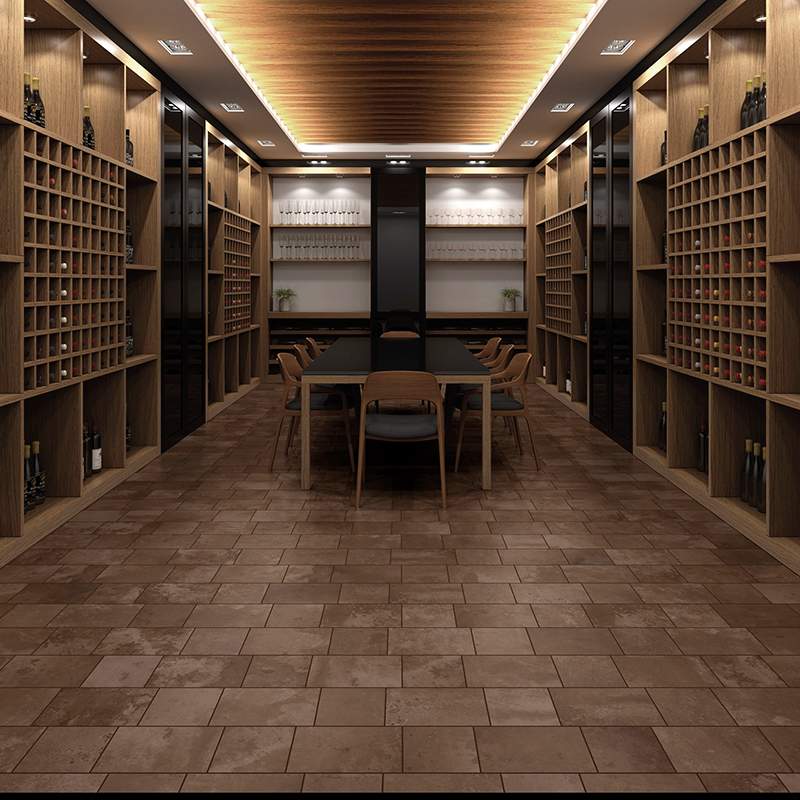
Finally, whatever you choose, keep in mind the light of the room, its size and the basic rules of placement so that the space feels tidy and well designed: take care where the pattern begins and ends, how the tiles are trimmed against the corners, the floor and ceiling, if there are niches, and so on.
With all of the above in mind you are now ready to start your project. You can visit our product catalogue where you will surely find the ideal tile that you will feel comfortable with and fits the style of your home.
Related posts
-
 15/05/2023Give color to the joints> Read morePosted in: Installation15/05/2023
15/05/2023Give color to the joints> Read morePosted in: Installation15/05/2023 -
 24/05/2023WHY ORDER 15% MORE CERAMIC MATERIAL?24/05/2023> Read more
24/05/2023WHY ORDER 15% MORE CERAMIC MATERIAL?24/05/2023> Read more -
 24/05/2023tips on how to tile a bathroom correctly and easily> Read morePosted in: Installation24/05/2023
24/05/2023tips on how to tile a bathroom correctly and easily> Read morePosted in: Installation24/05/2023 -
 15/09/2023HOW TO CHOOSE THE RIGHT ANTI-SLIP LEVEL15/09/2023> Read more
15/09/2023HOW TO CHOOSE THE RIGHT ANTI-SLIP LEVEL15/09/2023> Read more


































